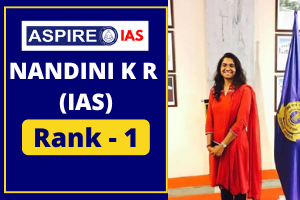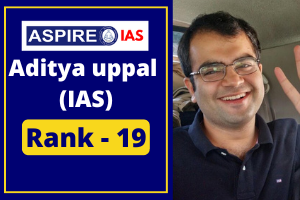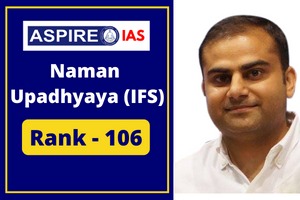Online Learning Portal
Online Learning Portal

Hybrid Classes
We provide offline, online and recorded lectures in the same amount.

Personalised Mentoring
Every aspirant is unique and the mentoring is customised according to the strengths and weaknesses of the aspirant

Topicwise Mindmaps
In every Lecture. Director Sir will provide conceptual understanding with around 800 Mindmaps.

Quality Content
We provide you the best and Comprehensive content which comes directly or indirectly in UPSC Exam.
IAS Foundation 2024
Optional Classes
Current Affairs
Test Series
Others Links
UPSC Prelims Classes 2024
Prelims
Mains Classes 2024
Mains & Interview
Mains Material
Test Series
Free Study Material

DAILY NEWS ANALYSIS
Gs- III: From Plate to Plough: In the shade of solar trees. Context The recent statement of our Finance Minister about transforming Annadata (farmer)into an Urjadata (producer of solar power) in her maiden Budget speech. How Help farmers produce solar power on their lands Farmers occupy the largest chunks of land in this country. Annadata Becoming an Urjadata: The recent statement of Finance Minister on doubling farmer’s income is the idea of making the ann
GS-III: A road to economic revival runs through agriculture. News One of the world’ fastest growing economies,India is now facing sluggish growth with the RBI sharply cutting GDP growth forecast to 6.1% for 2019-2020 which is slowest in last 6 years. Effects on primary sectors: The ripples of the slowdown are gradually moving to the primary sectors which are already reeling under an unprecedented confluence of pressure. Real agriculture and allied GVA grew by 2.9% during 20
GS-I: Rethinking water management issues. News NITI Aayog’s strategy for water resources is a constitutional of failed policies of the past. NITI Aayog released its strategy for New India @75 which defined clear objectives for 2022-23 with an overview of 41 distinct areas. Effective strategic planning must satisfy three essential requirements. One acknowledges and analyses past failures. Two suggesr realistic and implementable goals and three stipulate who will do what and
GS-I: Stirring up the truth about ZBNF News Zero Budget Natural Farming has no scientific validation and its inclusion into agricultural policy appears unwise. Most criticisms of modern agricultural practices are criticism of post-Liebig developments in agricultural science. What is Zero Budget Natural Farming? Zero Budget Natural farming (ZBNF) is said to be “do nothing farming”. It involves the application of nature’s principles in farming. It pract
GS-II: Assam tea estates violating labour laws. News A report by Oxfam a confederation of independent charitable organisations focussing on the alleviation of global poverty has flagged violation of labour rights on the tea estates of Assam. Key Findings Extremely Low Wages: Workers are paid in a ‘blend’ of cash and in-kind benefits and services. Cash payments are supplemented by the provision of food rations and free housing, healthcare and primary educat
Fall Armyworm (FAW) Syllabus subtopic: Issues related to direct and indirect farm subsidies and minimum support prices; Public Distribution System objectives, functioning, limitations, revamping; issues of buffer stocks and food security; Technology missions; economics of animal-rearing. News: Proper precaution and timely management by the state agriculture department and awareness among farmers have succeeded in thwarting an attack by the Fall Armyworm (FAW) on maize
Govt. procured only 3% of pulses, and oilseeds proposed for this season Syllabus subtopic: Issues related to direct and indirect farm subsidies and minimum support prices; Public Distribution System objectives, functioning, limitations, revamping; issues of buffer stocks and food security; Technology missions; economics of animal-rearing. News: Less than 3% of this season’s sanctioned amount of pulses and oilseeds have actually been procured so far under the oncehyped
WORLD BANK SUPPORTS ODISHA GOVERNMENT's CLIMATE RESILIENT AGRICULTURE CONTEXT: The Government of India, the Government of Odisha and the World Bank signed a US$165 million loan agreement to support smallholder farmers to strengthen the resilience of their production systems as well as diversify and improve the marketing of their produce, for increased income. ODISHA INTEGRATED IRRIGATION PROJECT FOR CLIMATE RESILIENT AGRICULTURE : It is a collaborativ
ICAR to set up an innovation fund to help farmers Syllabus subtopic: e-technology in the aid of farmers. Prelims and Mains focus: About the new Fund to be set up and its significance; about ICAR: role and mandate News: A system will soon be put in place to scientifically validate, scale up and propagate the innovations of progressive farmers as the Indian Council of Agricultural Research (ICAR) is poised to set up a Farmers’ Innovation Fund (FIF). What is it
Commission for Agricultural Costs and Price (CACP) Syllabus subtopic: Issues related to Direct and Indirect Farm Subsidies and Minimum Support Prices Prelims and Mains focus: about the open-ended procurement policy and the need to review it; about CACP and its mandate News: As the debate surrounding the review of open-ended procurement policy has started gaining momentum, following a recommendation by the Commission for Agricultural Costs and Price (CACP) to the Cent
Foodgrain production set to touch a record high Syllabus subtopic: Major Crops - Cropping Patterns in various parts of the country Prelims and Mains focus: on the foodgrain production in India and the challenges associated News: The Agriculture Ministry’s second advance estimates were released recently. Key highlights Total foodgrain production is projected to scale an all-time high of almost 292 million tonnes in 2019-20, propelled by record
3 new features of the e-NAM platform to prevent crowding in mandis Part of: GS Prelims and GS-III- Economy -Agriculture The Union Minister of Agriculture & Farmers’ Welfare, Rural Development and Panchayati Raj, Narendra Singh Tomar has launched three new features of the National Agriculture Market (e-NAM) Platform to enable farmers to sell their harvested produce directly from the warehouse which will prevent crowding in mandis amid COVID-19 outbreak. About newly la
“Reforming Indian Agriculture”-Agriculture reforms Part of: GS Prelims and GS-III- Economy-Agriculture India’s agriculture policies have had multiple mandates, including a production imperative (national food security), a consumer imperative (keeping food prices low for a large low-income population), and a farmer welfare imperative (raising farmer’s income). Tensions between these mandates have resulted in costly, contradi
Farm Loan Waiver When there is a poor monsoon or natural calamity, farmers may be unable to repay loans. The rural distress in such situations often prompts States or the Centre to offer relief,reduction or complete waiver of loans. Essentially, the Centre or States take over the liability of farmers and repay the banks. Waivers are usually selective , only certain loan types, categories of farmers or loan sources may qualify. For instance, in 2008, crop loans and investment loans were wa
National Policy on Marine Fisheries, 2017 In April 2017, the Government of India notified the 'National Policy on Marine Fisheries, 2017' (NPMF), which provides guidance for promoting the 'Blue Growth Initiative' which focuses on ushering 'Blue Revolution' (NeeliKranti) by sustainable utilization of fisheries wealth from the marine and other aquatic resources of the country for improving the lives and livelihoods of fishermen and their families. Government of Indi
Kisan Rath app Context: Ministry of Agriculture & Farmers Welfare launched the “Kisan Rath” App on 17.04.2020 to facilitate Farmers and Traders in identifying the right mode of transportation for the movement of farm produce ranging from food grain (cereal, coarse cereal, pulses etc), Fruits & Vegetables, oil seeds, spices, fibre crops, flowers, bamboo, log & minor forest produce, coconuts etc. To date, a total of 80,474 farmers and 70,581 traders are registered on
It’s about food, nutrition and livelihood security By, M.S. Swaminathan, an eminent agricultural scientist, is the Founder of the M.S. Swaminathan Research Foundation, Chennai. Nitya Rao is a Professor, of Gender and Development at the University of East Anglia, Norwich, U.K. Introduction The current national lockdown to tackle the COVID-19 pandemic has highlighted the problems of food, nutrition and livelihood security confronting a large number of rural people, in particular, mi
Kisan Sabha App Part of: GS-III- Agriculture (PT-MAINS-PERSONALITY TEST) The CSIR-Central Road Research Institute (CSIR-CRRI), New Delhi has developed the Kisan Sabha App to connect farmers to the supply chain and freight transportation management system. The app also intends to provide a robust supply chain management required to facilitate the timely delivery of the products at the best possible prices during the present situation of Covid-19. Imp Points
Soil Health Card Scheme Context The Union Minister for Agriculture & Farmers’ Welfare, Shri Narendra Singh Tomar has called for making integrated soil nutrient management a farmers’ movement. Reviewing the progress of the Soil Health Programme here today, he directed running mission mode awareness campaigns on increasing use of bio and organic fertilisers and reducing chemical fertilisers strictly based on recommendations of Soil Health Card. About Soil Health Card
Monetary, and regulatory support can help Agri industry account for 20% of exports by 2025 Introduction The monetary and regulatory support announced for the agricultural industry by the Finance Ministry on Friday has the potential to help double the share of this sector in the country’s basket of exports to around 20 per cent by 2025, according to some experts. The strengthening of post-production facilities like cold chains, storage infrastructure and farm-gate projects will
Agriculture Export Policy,2018 The Union Cabinet chaired by Prime Minister Shri Narendra Modi has approved the Agriculture Export Policy, 2018. The Cabinet has also approved the proposal for the establishment of a Monitoring Framework at the Centre with Commerce as the nodal Department with representation from various line Ministries/Departments and Agencies and representatives of concerned State Governments, to oversee the implementation of Agriculture Export Policy. Vision:&rd
Reforms and Agriculture Introduction With mandi closures and supply chain disruptions causing havoc in agricultural marketing, the COVID-19 pandemic has put a spotlight on some of the critical infrastructure gaps and long-pending governance issues that plague the farm sector. The third tranche of the Atmanirbhar Bharat Abhiyan listed measures to deal with those gaps, though there has been no announcement on an immediate economic stimulus for the sector. What are the reforms announce
Model Contract Farming Act, 2018 With a view to integrating farmers with bulk purchasers including exporters, agro-industries etc. for better price realization through mitigation of market and price risks to the farmers and ensuring smooth agro raw material supply to the agro-industries, a “Model Contract Farming Act” has been prepared by the Ministry of Agriculture & Farmers Welfare for circulation to the States for its adoption. Farmer’s producer organizations (FPO&
Farm gate in focus: On amending Essential Commodities Act Introduction 1-lakh crore fund to finance agriculture infrastructure projects at the farm gate and produce aggregation points. Given that the lack of adequate cold-storage facilities continues to extract a high price on farmers and the agrarian economy by way of post-harvest losses, especially in perishables, the targeted outlay is a welcome step. Agriculture Infrastructure Funds The decision to channel the funds to agricu
End of a monopoly Agriculture is a state subject under the Constitution, but the Green Revolution wouldn’t have happened without the political leadership at the Centre in 1966 approving the import of 18,000 tonnes of seeds of high-yielding semi-dwarf wheat varieties from Mexico. The government’s decision now to enact a Central law to dismantle the monopoly of agricultural produce market committee (APMC) mandis in the wholesale trading of farm commodities. It’s all ve
Alternative dwarfing genes in wheat can eliminate rice crop residue burning In India, close to twenty-three million tonnes of leftover rice residues are annually burnt by farmers to get rid of the straw and prepare their fields for sowing wheat, which is the next crop, resulting in air pollution. Also, dry environments pose a challenge for the germination of wheat varieties with short coleoptiles. To overcome these problems, Scientists at Pune-based Agharkar Research Institute (ARI), a
“Sweet Revolution” as a part of Atmanirbhar Bharat Abhiyan The government is promoting Beekeeping as part of its aim to double farmers’ income. The Government has allocated Rs.500 crore towards Beekeeping under the Atma Nirbhar Abhiyan. India is among the world’s top five honey producers. Compared to 2005-06 honey production has risen by 242% and exports shot by 265%. Beekeeping will be an important factor in achieving the goal of doubling farmers’ inc
Hardly the 1991 movement for Agriculture The reforms in agricultural marketing are no more than reiterations of earlier pronouncements The announcement of reforms in agricultural marketing by Finance Minister Nirmala Sitharaman, in May, has been hailed by some as the “1991” moment for agriculture. While it does not mean much on the ground, it has successfully managed to deflect attention from the pittance offered by way of financial support to the agricultural sector, as a part
Enjoying the fruits of their labour By, M. Venkaiah Naidu is the Vice-President of India Introduction Today, India is a leading producer of a variety of agricultural and allied produce and an exporter of some of them. This is due to the relentless hard work and efforts of our farmers against the odds. They are the epitome of the Nishkam Karma philosophy taught by Krishna to Arjuna during the Kurukshetra War: “Karmanye Vadhikaraste Ma Phaleshu Kada Chana (Do your duty without e
Amendment to Essential Commodities Act Historic Amendment to Essential Commodities Act The Cabinet today approved a historic amendment to the Essential Commodities Act. This is a visionary step towards the transformation of agriculture and raising farmers’ income. Background While India has become surplus in most agri-commodities, farmers have been unable to get better prices due to a lack of investment in cold storage, warehouses, processing and export as the entr
Zero budget natural farming project To promote organic farming Himachal Pradesh has launched the Zero Budget Natural Farming project. Zero-budget farming is a natural farming technique that uses biological pesticides instead of chemical-based fertilizers. In this method, the cost of growing and harvesting plants is zero, which makes it highly beneficial for farmers.
Malathion insecticide HIL (India) Limited, a PSU under the Ministry of Chemicals and Fertilizers and one of the leading manufacturers of insecticides in the country has supplied 25MT Malathion 95% ULV to Iran under the Government-to-Government initiative for Locust Control Programme. As per the reports of the Food and Agriculture Organisation (FAO), the hopper stage population of locust is building up in Sistan-Baluchistan Region of Iran, which shall migrate to India in the coming m
National Agroforestry Policy,2014 Context A webinar was organized on 13th June 2020 to discuss ways and means to connect agroforestry farmers to industry and sensitise implementing States to assist farmers in making the correct choice of species. What is agroforestry? Agroforestry is defined as a land use system which integrate trees and shrubs on farmlands and rural landscapes to enhance productivity, profitability, diversity and ecosystem sustainability. It is a dynamic
Government declares Minimum Support Price for Mature Dehusked Coconut The government of India has declared Minimum Support Price for mature dehusked coconut for the season 2020 at Rs. 2700/- per quintal, thus hiking the MSP by 5.02% from Rs. 2571/- per quintal during the season 2019. Homogeneous Development This decision has given utmost importance to the interests of farmers growing all kinds of crops throughout the country. The hike in the MSP for mature dehusked coc
KVIC launches Sandalwood and Bamboo plantation, a new initiative to spur monetization of its assets The Khadi and Village Industries Commission (KVIC), in a first-of-its-kind initiative has begun exploring the untapped but highly profitable venture of sandalwood and bamboo tree plantation for monetization of its assets. Seeking to encourage commercial plantation of sandalwood and bamboo, the KVIC has begun a drive with the plantation of 500 saplings each of sandalwood and bamboo at its
Krishi Vigyan Kendras It is an integral part of the National Agricultural Research System (NARS). It consists of scientists, technical staff, administrative support staff and auxiliary staff. The first KVK was established in 1974 at Puducherry. KVKs also produce quality technological products (seed, planting material, bio-agents, and livestock) and make it available to farmers. The KVK scheme is 100% financed by the Government of India.
Farm infra scheme A new financing scheme has been launched under the? 1 lakh crore Agriculture Infrastructure Fund is meant for setting up storage and processing facilities, which will help farmers get higher prices for their crops. The scheme will support farmers, PACS [primary agricultural credit societies], FPOs [farmer producer organisations], agri-entrepreneurs, etc. in building community farming assets and post-harvest agriculture infrastructure. These assets will enable farmers
Organic Farming in India Context India ranks 1st in the number of organic farmers and 9th in terms of area under organic farming. Indian Scenario Regarding Organic Farming Sikkim became the first State in the world to become fully organic in 2016. North East India has traditionally been organic and the consumption of chemicals is far less than the rest of the country. Similarly, the tribal and island territories have been traditionally practising organic farming. The ma
Need For MSP Reforms Context Recently, three new farm laws were passed by the parliament to increase the relative role of markets without dismantling the MSP (Minimum Support Prices) system. These laws meet widespread protest from the farming community, especially in Punjab and Haryana. Fearing the government will do away with the MSP is the bone of contention behind these protests. Farmers want higher and assured income through effective MSP, while the government is offering greater
Will the farm bills benefit farmers? Context: President Ram Nath Kovind gave his assent to all the three contentious farm bills, which opposition parties say are anti-farmer and corporate-friendly, after they were recently passed by Parliament during its monsoon session amid vehement protests. Those 3 bills are: The Essential Commodities (Amendment) Bill, The Farmers’ Produce Trade and Commerce (Promotion and Facilitation) Bill (commonly referred to as the APMC Bypass
It’s a no green signal from the farm world Context Recently, there have been strong protests from farmers, especially from the states of Punjab and Haryana, against three farm bills that seek to replace ordinances issued in june 2020. These bills envisage to bring change in some of the key aspects of the farm economy — trade in agricultural commodities, price assurance, farm services including contracts, and stock limits for essential commodities. These bills sought to b
An agriculture-led revival as flawed claim Context: A rather confident statement heard in the midst of India’s COVID-19-induced economic slowdown is this: “Agriculture will lead India’s economic revival”. Arguments in favour of the above thought: First, India’s food grain production in 2019-20 was 3.7% higher than in 2018-19. The procurement of rabi wheat in 2020-21 was 12.6% higher than in 2019-20. These indicate, it is argued, resilience in
Taking on the Centre: On States rejecting farm laws Context Punjab’s efforts to enact State amendments to override the effects of the Centre’s new agriculture laws epitomise the difficulties in managing the conflict between liberalising the farm sector and protecting the small and marginal farmer from the agonies of the transition. Federal conflict: The issue also flags the consequences of not having a wide and informed debate before introducing far-reaching chan
Freeing the farmer Introduction: The debate on the Farmers’ Produce Trading and Commerce Act 2020 (FPTC Act) has seen some misinformation and qualms among stakeholders, especially farmers in some states. It is imperative to understand the background and intentions underlying the new farm laws. Background: APMC markets From the 1960s, there have been concerted efforts to bring all wholesale markets for agricultural produce in various states under the Agricul
What determines onion prices? Context The Centre on Friday reintroduced the stock limit on onions — a move aimed at controlling rising prices, which crossed Rs 80 per kg in many cities on Friday, including nearly Rs 100/kg in Mumbai. Barely a month ago, Parliament had amended the Essential Commodities Act, 1955 to exclude onions — besides potatoes, edible oils, oilseed and pulses — from the list of essential commodities, thus freeing them from stock limits. Why
In a mirror of the economy, agricultural exports grow amid an overall decline Context India’s agricultural exports are up 4.6% year-on-year in dollar terms during April-September. This comes even as the country’s overall merchandise exports for the same period have registered a 21.2% annual decline. Commodity-wise foreign trade data from the department of commerce shows exports of farm goods from India during April-September at $18.12 billion, 4.6% higher than the $17.
Pradhan Mantri Kisan Sampada Yojana Scheme for Creation of Infrastructure for Agro-Processing Cluster: PMKSY Recently, the Union Minister of Food Processing Industries attended the Independent Management Advisory Committee (IMAC) meeting to consider the proposals received under the Scheme for Creation of Infrastructure for Agro-Processing Cluster (APC) of Pradhan Mantri Kisan Sampada Yojana (PMKSY). Features IMAC approved 7 proposals with a total project cost of Rs. 234.68 crore i
New irrigation model to help desert villagers Irrigation is an important topic UPSC GS Paper III - Agriculture: Major crops and cropping patterns, Irrigation techniques. Many questions are also asked in UPSC Prelims. What is the news? A new model of minor irrigation through sub-surface porous vessels (SSPV) being developed here is set to benefit the farmers with small land holdings in the villages of the Thar desert. Experiments have indicated a higher yield of farm produce and imp
Farmers Rights vs Farm Laws Context: Agriculture and Farmers Rights is an important part of GS Paper II and GS Paper III of UPSC Mains Examination 2021. The Supreme Court suggested to form a joint panel to look into the demands of the agitating farmers recently. But this offer was rejected by the farmer groups as a tactic act. Farmers’ representatives see a moral victory in the Supreme Court’s observations, in that the top court did not outright reject their demands
Separate Wheat from the Agriculture Policy In the ongoing debates around the three new pieces of agricultural legislation and the farmers’ demand for the continuation of minimum support prices (MSP), questions have often been raised about whether the government should be using the taxpayers’ money to provide subsidies to the farming community in this country. However, logically, two further questions must be asked, but none of them has been, in any significant manner.
Kerala Model of Farming For more than a month now, farmers are writing a new history, camping at the borders of Delhi. The concrete barricades, thorny iron fences and powerful water cannons have not been able to prevent their tractor trollies from reaching the vicinity of the national capital. They have been so determined and prepared that the Delhi winter has failed before them. Assembled in their thousands, they have established a new way of life at Singhu, Tikri, Ghazipur, Noida and
Analysis of Farm Bills Almost all sections of people including farmers agree that the Agricultural Produce Market Committee (APMC)-mandi policies for agricultural marketing, initiated in the 1960s for a few crops, have outlived their utility and the system needs a new policy in the face of the agricultural sector’s growth slowdown, the crop-composition not widening, and investments in land not happening. Recently, the government of the day has opened up the output market with the a
Analysis of the level of Agriculture support needed in India Sachin Kumar Sharma is an Associate Professor at the Centre for WTO Studies, Indian Institute of Foreign Trade, Delhi. Adept Dobhal is a Research Fellow at the Centre for WTO Studies. The ongoing stalemate between the farmers protesting over the recently passed farm laws and the government has sparked an interesting debate regarding the level of agricultural support. Many media reports, based on data by the Organisation for
Agriculture Credit and Institutional role in Agriculture Forms of Agriculture Credit Scheduled Commercial Banks are the largest credit providers followed by Cooperatives and Regional Rural Banks. Collateral Free Agri Loan has been increased to 1.6 lakhs. Crop loan up to Rs. 3 lakhs at 7% Rate of Interest and 3% Interest subvention for those who pay loan on time. Kisan Credit Card, 1998-99 KCC is for all type of credit needs in Agri and allied sector. It is implemented
Data on Agriculture Contribution to GDP The share of agriculture in GDP increased to 19.9 per cent in 2020-21 from 17.8 per cent in 2019-20. -ECONOMIC SURVEY(ES). While COVID-induced lockdowns adversely affected the performance of the non-agricultural sectors, the agriculture sector came up with a robust growth rate of 3.4 per cent at constant prices during 2020-21. During 2020-21, while the GVA for the entire economy contracted by 7.2 per cent, Growth in GVA for agriculture maintai
Mission Organic Value Chain Development for North Eastern Region (MOVCDNER) Prime Minister Modi initiated a scheme for the development of commercial organic farming in the region in 2015 which later became to be known as “Mission Organic Value Chain Development for North Eastern Region” (MOVCDNER) Under MOVCDNER, the FPCs get access to shared infrastructure including collection centres, custom hiring centres, processing infrastructure and packhouses, allowing them to add val
Agriculture Infrastructure Development Cess The Budget 2021-22 has proposed a new levy, Agriculture Infrastructure Development Cess (AIDC) on 29 items. The purpose of the new AIDC is to raise funds to finance spending on developing agriculture infrastructure. The new cess will be levied on 29 products, such as gold, silver, as well as imported alcohol (excluding beer), imported apple, pulses, palm oil, urea, and petrol/diesel including branded ones. The new cess will only offset the
One District One Focus Product Ministry of Agriculture and Farmers Welfare, and the Ministry of Food Processing Industries have finalized the products for One District One Focus Product (ODOFP). Products - Agricultural, horticultural, animal husbandry, poultry, milk, fisheries, aquaculture, marine and processed food sectors. These products are finalized after taking inputs from States/UTs and the Indian Council of Agricultural Research (ICAR). They will be promoted in a cluster
Enabling the Business of Agriculture (EBA) report Introduction While the country is divided on the need for the three new farm laws, the fact remains that farmers, mainly smallholders, across India continue to face various constraints in carrying out farming activities like accessing agricultural inputs, markets, finance, human resources, and information, which are critical for increasing farmers’ competitiveness. Hence there is a need for sound r
Agriculture Voltage Technology The agri-voltaic system of 105 KW capacity was developed by ICAR-Central Arid Zone Research Institute, Jodhpur. This technology can increase the income of farmers by the generation of electricity and growing cash crops simultaneously on the same piece of land. Under component-I of the KUSUM scheme, there is a provision for the installation of an agri-voltaic system in farmers’ fields with a capacity ranging from 500 KW to 2 MW. KUSUM
Paramparagat Krishi Vikas Yojana It was started in 2015 under Ministry of Agriculture and Farmers Welfare. It is a sub component of Soil Health Management under National Mission on Sustainable Agriculture. MP has largest area under Organic certification followed by Rajasthan, Maharashtra and UP. Features of PKVY Produce Agri products free from chemicals and pesticides. Cluster approach in input production, quality assurance and value addition. For more
Small Farmers’ Agribusiness Consortium The government of India through the Small Farmers’ Agribusiness Consortium (SFAC), a registered society under the Department of Agriculture, Cooperation & Farmers’ Welfare, Government of India, is promoting Farmer Producer Organisations (FPOs) by mobilizing the farmers and helping them in registering as companies and providing them with handholding support and training for their sustainability. SFAC handles Prize Stabilization
National Institutes of Food Technology Bill, 2019 Passed by Rajya Sabha Rajya Sabha passed the National Institutes of Food Technology, Entrepreneurship and Management Bill, 2019. Provisions: The bill declares two institutes of food technology, entrepreneurship, and management as institutions of national importance. These are: National Institute of Food Technology Entrepreneurship and Management, Haryana Indian Institute of Food Processing Technology, Tamil Nadu.
Major Crops Recent developments in Crops- Economic Survey Food Grains Among total imports of food grains, the % share of different crops shows that- cereals are highest followed by pulses>cashewnuts > edible oils. Food Grains Constitute 50.7% of agriculture production. Among food grains, Weightage of Cereals is 41.7%, Pulses is 8.9% Among Cereals, Weightage of Coarse Cereals is 6.9%. 296.7MT of food grains were produced in 2019-20, compared to 285.2 MT in 20
New irrigation techniques - PMKSY Background Water resources development & management are planned, funded, executed and maintained by the State Governments (PT Pointer) themselves as per their own resources and priorities. In order to supplement the efforts of the State Governments, Government of India provides technical and financial assistance to State Governments to encourage sustainable development and efficient management of water resources through various schemes and progra
Agriculture issues and its role in food security Issues in Indian agriculture Due to a variety of limiting factors, from uncertainties of the weather to soil fertility and water availability, increasing returns to scale are very difficult to achieve in farming. This underscores the need for the right kind of public investment in agriculture. Again, economies of scale allow producers in industry to make profits by cutting unit costs, even as prices fall, while those who fail to mak
Status of Indian Agriculture Growth: The Agriculture and Allied activities clocked a growth of 3.4%. As per the Provisional Estimates of National Income released by Central Statistical Organization in May, 2020, the share of Agriculture and Allied Sectors in Gross Value Added (GVA) of the country at current prices is 19.9% in 2020-21 from 17.8% for the year 2019-20. Agricultural Exports In 2019-20, India’s agricultural and
Shaphari Scheme – To Include Shrimp Farms in Aquaculture Marine Products Export Development Authority (MPEDA) recently launched a certification scheme for aquaculture called the “Shaphari Scheme”. About Shaphari Scheme: Safari is a Sanskrit word that means the superior quality of fishery products suitable for human consumption. Purpose: It is an Antibiotics free Certification Scheme. It certifies hatcheries and farms for the production of antibiotic-free sh
Purple Revolution Council of Scientific and Industrial Research-Indian Institute of Integrative Medicine, Jammu announced phase 2 of the purple revolution under the Aroma Mission, after the success of phase 1 in Doda, Jammu. Under the purple revolution, the farmers in the Doda district had their incomes quadrupled after shifting from maize to lavender cultivation. First-time farmers were given free lavender saplings and those who have cultivated lavender before were charged Rs. 5-6 per sap
Dindori Millets Project- Agriculture UPSC GS: Paper-3: Agriculture and Dry Land area Development: Prelims-Personality Test Context: 2023 will be observed as the International Year of Millets after India’s proposal to the Food and Agricultural Organization (FAO) was approved. In the last six decades, millets have seen a drop in area despite green evolution in the 1960s; however, the productivity seems to go up with the help of high-yield varieties and better technologies.&n
National Programme for Organic Production-Organic agriculture GS-Paper-3: Economic - Agriculture – UPSC PRELIMS – Mains Application Agricultural and Processed Food Products Export Development Authority (APEDA) has sourced finger millet and barnyard millet from farmers in Himalayas (Uttarakhand) for exports to Denmark. These millets were exported to Denmark after meeting the organic certification standards of the European Union (EU). Organic Food Organi
Agriculture Mechanization in India Why is Agriculture Mechanisation important? Agricultural Mechanization plays a vital role in optimizing the use of land, water energy resources, manpower and other inputs like seeds, fertilizers, pesticides etc to maximize the productivity of the available cultivable area and make agriculture a more profitable and attractive profession for rural youth. Agricultural Mechanization is one of the key drivers for the sustainable development of the agricu
India’s export of organic food products India’s export of organic food products rose by more than 51% to Rs 7078 crore ($ 1040 million) during April-February (2020-21) compared to the same period in the previous fiscal (2019-20). In terms of quantity, the exports of organic food products grew by 39% to 888,179 metric tonne (MT) during April-February (2020-21) compared to 638,998 MT shipped in April- February (2020-21). The growth in organic products have been achieved despite
Special Kharif Strategy for self-sufficiency in Pulses Progress until now From a meagre production of 14.76 million tonnes in 2007-08, the figure has now reached 24.42 million tonnes in 2020-2021 (2nd advance estimates) which is a phenomenal increase of65%. This success is largely attributed to several significant interventions at the central level. The Government has consistently been focussing on bringing new areas under pulses along with ensuring that productivity is also incre
PM Kisan Samman Nidhi Yojana About PM Kisan Samman Nidhi Yojana PM KISAN is an initiative by the Government of India to which all farmers will get up to. 6,000 per year as minimum income support. The Scheme is in effect from 01.12.2018. The scheme was officially launched on 24th February 2019. It was announced in the 2019 Interim Budget. The scheme has a cost? 75,000 crore per annum. It is a new Central Sector Scheme. History of PM KISAN Scheme
APEDA (Agri and Processed Food Export Development Authority), 1985 It is a statutory body under APEDA Act, 1985. It functions under Commerce Ministry. Functions Export promotion and development of scheduled products like fruits, vegetables, meat, poultry, dairy, confectionary, biscuits, bakery, honey, jaggery, floriculture, etc. by giving them financial assistance, and surveys. Responsibility to monitor the import of Sugar. It r
What is Agriculture Infrastructure Fund? Cabinet gave its approval to the following modifications in the Central Sector Scheme of Financing Facility under the ‘Agriculture Infrastructure Fund’: Eligibility has now been extended to State Agencies/APMCs, National & State Federations of Cooperatives, Federations of Farmers Producers Organizations (FPOs) and Federations of Self Help Groups (SHGs). At present Interest subvention for a loan up to Rs. 2 crore in one location
Sugarcane Cultivation in India Sugarcane belongs to the Poaceae family of true grasses. It is a tropical and perennial grass which attains a length of 10 to 20 feet. A single plant of sugarcane has ‘many stems’ in a tuft. Since ancient times, Sugar has been produced in the local units in India using traditional Khandsari process. Modern Sugar making was introduced in India probably by Dutch. The first Sugar Mill was started in India in Bihar in 1903; followed by a
Government efforts for Sustainable Agriculture The Government has adopted several developmental programmes, schemes, reforms and policies that focus on higher incomes for the farmers and to promote Sustainable Agriculture and Farmers Prosperity. We advice you to watch this free and comprehensive lecture by Ankit Sir on Agriculture (Mindmap and explanation) and then come back to this document, your retention quality will increase exponentially. 1) PM KISAN With a view t
Progress in doubling Farmer’s income The strategy adopted by the Government for increasing income is Higher volume of output through higher productivity Lower cost of production and Higher real remunerative returns on the farmers’ produce. What are the steps taken? In the case of production, the farmers have been registering higher productivity across all segments of Agriculture. There has been recorded growth in total output of food grains, oilseeds, ho
Organic Farming It means no use of hazardous chemicals. Government rule says atleast 3 years, a farmer must grow only then, Organic farming can be granted. Effect of Inorganic Fertilizers and other agro-chemicals on Soil and Plants It results in nutrient loss and increases soil acidity with nitrification. Emission of Ammonia, Methane, Nitrous oxide and elemental nitrogen from soil as a result of denitrification. Depletion of s
e-Technology in Agriculture Indian Council of Agricultural Research (ICAR) is continuously working to upgrade technology and provide quality seeds to farmers. During this process the advancements made in the agricultural sciences both within India and outside are considered for their replication under the suitable farming situations. ICAR focuses on development/ adoption of new technologies such as- high yielding and multi-stress resistant/tolerant varieties/hybrids in major crops; m
One District One Focus Product Scheme Ministry of Agriculture and Farmers Welfare, and Ministry of Food Processing Industries has finalized the products for One District One Focus Product (ODOFP). Products - Agricultural, horticultural, animal husbandry, poultry, milk, fisheries, aquaculture, marine and processed food sectors. These products are finalized after taking inputs from States/UTs and Indian Council of Agricultural Research (ICAR). They will be promoted
Krishi Vigyan Kendras (KVKs) 1st KVK in Puducherry. 100% funded by Govt. KVKs are sanctioned to Agri Universities, ICAR, related Govt Depts and NGOs working in Agri. KVK, is an integral part of the National Agricultural Research System (NARS). It aims at location specific technology modules. Functions On farm testing to assess location specificity of Agri technologies. Frontline demonstrations to establish production potential of technologies. as Knowledge and Resource C
Paramparagat Krishi Vikaas Yojana (Organic Farming), 2015 Sikkim is World's 1st organic State. MP has the largest area under Organic certification followed by Rajasthan, Maharashtra and UP. Ministry: of Agriculture and Farmer’s Welfare. Funding: Centrally Sponsored with 60:40 for States except NE and Himalayan States (90:10) and 100% for UTs. Components: To produce agricultural products free from chemicals and pesticide residues by
Agriculture Mechanization in India Why is Agriculture Mechanisation important? Agricultural Mechanization plays a vital role in optimizing the use of land, water energy resources, manpower and other inputs like seeds, fertilizers, pesticides etc to maximize the productivity of the available cultivable area and make agriculture a more profitable and attractive profession for rural youth. Agricultural Mechanization is one of the key drivers for the sustainable development of the agricu
Steps taken by the Government to promote Agriculture Sector in Education The Indian Council of Agricultural Research (ICAR) has informed that to promote agriculture sector through Education, 63 State Agricultural Universities, 3 Central Agricultural Universities, 4 Deemed to be Universities and 4 Central Universities with agriculture faculty are working in the country. ICAR has also informed that in order to promote agricultural education and attract students in agricultural education, v
Organic Farming and Zero Budget Natural Farming Read the complete topic about Organic Farming and then read the following content, your retention quality will improve exponentially. Paramparagat Krishi Vikas Yojana: click here to get the complete topic. Zero Budget Natural Farming Intro: Originally promoted by Subhash Palekar in the mid-1990s as an alternative to GR methods. Rationale: According to NSSO data, ~ 70% of Agriculture households spend more than they e
New Technologies in Agriculture Sector National Agricultural Research System National Agricultural Research System coordinated at the apex level by the Indian Council of Agricultural Research (ICAR)/ Department of Agricultural Research and Education (DARE), comprises of 98 Agricultural Research Institutes, 5 Deemed Universities and 3 Central Agricultural Universities besides 63 State Agricultural Universities, 4 Universities with Agriculture Faculty and 82 All India Coordinated Research
Farmer Producer Organizations(FPOs) The government of India has approved and launched the Central Sector Scheme of “Formation and Promotion of 10,000 Farmer Producer Organizations(FPOs)” to form and promote 10,000 new FPOs till 2027-28 with a total budgetary outlay of Rs.6865 Cr. Under the scheme, the formation and promotion of FPO is based on the Produce Cluster Area approach and the specialized commodity-based approach. While adopting a cluster-based approach, the f
NARS Research on Agriculture Research findings : India is a major producer of paddy, wheat and pulses. In production, India ranks 2nd in paddy & wheat and 1st in pulses in the world including neighbouring countries. National Agricultural Research System India has one of the world’s largest Agricultural Research systems viz., National Agricultural Research System (NARS) including ICAR institutes and State Agricultural Universities (SAUs). The NARS has cont
PM Fasal Bima Yojana, 2016 = MoAFW One Nation – One Scheme theme. It will replace 2 schemes: National Agriculture Insurance Scheme (NAIS) and the modified NAIS. It was launched along with 2 schemes: Weather Based Crop Insurance Scheme (WBCIS) and restructured pilot UPIS (Unified Package Insurance Scheme). Objectives: Provide insurance coverage, Stabilize (not double) income of farmers, Encourage farmers to adopt inno
Farmer Producer Organisations (FPOs) The Government of India has launched the Central Sector Scheme of “Formation and Promotion of 10,000 Farmer Producer Organisations (FPOs)” to form and promote 10,000 new FPOs which will leverage economies of scale in production and marketing with a view to enhancing productivity through efficient, cost-effective and sustainable resource use for ensuring sustainable income-oriented farming, thus helping in reduction of cost of farm product
Jute-ICARE An Initiative to Double the income of Jute Farmers Improved Cultivation and Advanced Retting Exercise for Jute (Jute – ICARE) was launched in 2015 to popularize/introduce some of the better agronomic practices like microbial assisted retting among farmers intensively in a few blocks in West Bengal and Assam on pilot basis. The improved agronomic practices include – line sowing of jute using seed drill to increase yield by 10-15%; weed management in jute by
Pradhan Mantri Krishi Sinchayee Yojana 65 out of 141 million hectares of net area sown is presently covered under irrigation. If irrigation is assured, farmers tend to invest more in farming technology and inputs. PMKSY was initiated in 2015 with an aim to enhance physical access to water on farms and expand cultivable areas under assured irrigation, improve on-farm water use efficiency, introduce sustainable water conservation practices, etc. It is an umbrella scheme, consisting of t
India Digital Ecosystem of Agriculture (IDEA) In order to create Agristack in the country, the department is in the process of finalising “India Digital Ecosystem of Agriculture (IDEA)” which will lay down a framework for Agristack. Accordingly, a Task Force has been constituted and in furtherance, a Concept Paper on IDEA has already been floated for comments from the general public not only through the department’s website but also through emails especially to s
FASAL and CHAMAN Scheme The Ministry of Agriculture & Farmers’ Welfare is funding various projects for Crop Production Forecasting, which includes FASAL Scheme (Forecasting Agricultural output using Space, Agro-meteorology and Land based observations) and CHAMAN (Coordinated Horticulture Assessment and Management using geo-iNformatics). FASAL is used for crop production forecasting of field crops while CHAMAN is for horticulture crops. In both the projects, Indian Space Rese
National Mission on Edible Oil-Oil Palm: New Edible oil mission The Centre will spend Rs. 11,000 crores on a new mission to ensure self-sufficiency in edible oil production at a time when India’s dependence on expensive imports has driven retail oil prices to new highs. This financial outlay for the National Mission on Edible Oil-Oil Palm (NMEO-OP) will be over a five-year period. “Today, when India is being recognised as a major agricultural exporting count
Issues in National Mission on Edible Oil-Oil Palm In a letter to Prime Minister Narendra Modi last week, soon after the launch of the 11,040 crore National Mission on Edible Oil-Oil Palm (NMEO-OP), Meghalaya MP Agatha Sangma warned that the focus areas were “biodiversity hotspots and ecologically fragile” and oil palm plantations would denude forest cover and destroy the habitat of endangered wildlife. The palm is an invasive species. It is not a natural forest product of nor
National Farmers’ Database The Centre has created a National Farmers’ Database with records of 5.5 crore farmers, which it hopes to increase to 8 crore farmers by December by linking it to State land record databases, according to Agriculture Minister Narendra Singh Tomar. Agriculture has to be linked with digital technology, scientific research and knowledge. The national database was created by taking data from existing national schemes such as PM-KISAN, soil health cards
Transport and Marketing Assistance (TMA) scheme The Centre has revised the "Transport and Marketing Assistance" (TMA) scheme for Specified Agriculture Products. In February 2019, the Department of Commerce had introduced ‘Transport and Marketing Assistance (TMA) for Specified Agriculture Products Scheme’ to provide assistance for the international component of freight, to mitigate disadvantage of higher freight costs faced by the Indian exporters of agriculture
Digital Agriculture Mission Recently, the Ministry of Agriculture and Farmers Welfare signed 5 Memorandums of Understanding (MOUs) with private companies for taking forward Digital Agriculture. A Digital agriculture mission has been initiated for 2021 -2025 by the government for projects based on new technologies like artificial intelligence, blockchain, remote sensing and GIS technology, use of drones and robots etc. What is Digital Agriculture Mission? Digital Agriculture i
What is Krishi UDAN 2.0 Scheme? Krishi UDAN 2.0 lays out the vision of improving value realization through better integration and optimization of Agri-harvesting and air transportation and contributing to Agri-value chain sustainability and resilience under different and dynamic conditions. The scheme proposes facilitating and incentivizing the movement of Agri-produce by air transportation. We are adopting the model of A2A – Agriculture to Aviation. The convergence betwe
Sustainable Agriculture In Detail Context: This topic is important for UPSE GS Paper 3. What is Sustainable Agriculture? Sustainable agriculture is the production of plant and animal products, including food, in a way that uses farming techniques that protect the environment, public health, communities, and the welfare of animals. It allows us to produce and enjoy healthy foods without compromising the ability of future generations to do the same. The key to sustainable
ATMA Scheme in Agriculture Centrally Sponsored Scheme ‘Support to State Extension Programs for Extension Reforms” popularly known as ATMA Scheme in agriculture is under implemented since 2005. Presently, the ATMA Scheme is being implemented in 691 districts of 28 states & 5 UTs in the country. The ATMA scheme promotes a decentralized farmer-friendly extension system in the country. The objectives of the Scheme is to support State Government’s ef
11th Agriculture Census The Eleventh Agricultural Census (2021-22) was launched recently. It will bring huge benefits to an agricultural country like India. About agriculture census It is a statistical operation for collecting, processing, and disseminating data on the structure of agriculture by covering the whole o
Paddy Dwarfing Image Source - The Indian Express In Punjab and Haryana, a strange illness has struck the paddy crop, "dwarfing" the plants. The 'Southern Rice Black-Streaked Dwarf Virus' (SRBSDV), so named after Southern China, where it was initially discovered in 2001, has been identified as the mystery's cause by scientists. Paddy Dwarfing Rice dwarf disease is characterised by plant stunting and the formation of white chlorotic spots on the leaf
Nano Urea Fertiliser The Ministry of Chemicals and Fertilizers recently approved the use of Nano urea for commercial purposes. Image Source - Hindi Shobha About Nano Urea Fertiliser IFFCO created the liquid fertilizer known as nano urea. It serves as an alternative to regular urea. It is urea in the shape of a nanoparticle, essentially. An artificial source of nitrogen, a key nutrient needed by plants, urea is a chemical nitrogen fertilizer that is white in colour. Its o
White Fly White fly attacks on cotton have increased recently in a number of states, including Punjab and Rajasthan. What are the facts regarding the white fly? By eating on the underside of the leaf and dispersing illnesses like Cotton Leaf Curl Virus, whiteflies are a significant pest of cotton that reduce output. They consume the leaf sap and exude fluid onto the leaves, where a black fungus develops. This weakens the plant by interfering with photosynthesis, the proces
GM Mustard (DMH-11) The Central government may soon approve genetically modified crops, but protestors are still fighting to prevent their commercial usage. Approval of GM Mustard (DMH-11) The Union Ministry of Environment, Forest, and Climate Change's Genetic Engineering Appraisal Committee (GEAC) may give its approval for the commercial production of modified mustard. This would be the first time since 2002 that GM mustard, a hybridised variant of the mustard species that
Pokkali Rice Pokkali is a historical hereditary rice crop grown in Kerala's coastal regions, including Ezhikkara and Ernakulam, and is supported by Palliyakal Cooperative Service Bank (PCSB). Pokkali is an old farming system that alternates one season of rice growing with another season of prawn culture. Prawn seedlings graze on the remains of the harvested crop as they swim in from the sea and backwaters after the rice harvest. The rice crop, which receives no additional fertili
Portal on National Mission on Natural Farming The Union Agriculture Minister recently launched a portal on the National Mission on Natural Farming (NMNF) for the benefit of farmers. Important Points about The NMNF website: The Agriculture Ministry is in charge of its development. It was launched here at the National Natural Farming Mission's first steering committee meeting. The portal contains all of the mission's information, implementation outline, resources,
Nano Fertilizers IFFCO's nano fertilizers and Amul's dairy products will be among the first few goods that the first National Export Co-operative Society is anticipated to export. Information about nano fertilizers: Nanotechnology in fertilizers: Using nanoparticles with a size of less than 100 nm, nanotechnology may present a once-in-a-lifetime opportunity to create concentrated sources of plant nutrients with a better absorption rate, more effective use, and minimal los
Urban farming The Delhi government received the "Draft Citizen's Policy for Urban Agriculture in Delhi" from the research of the non-profit People's Resource Centre in 2022, which offered a comprehensive framework for urban farming. More about the news: Delhi gets 60% of its meat, 25% of its milk, and 15% of its vegetable needs from the produce grown in the city. However, the land use and farming policies of the National Capital do not take into
IFFCO Nano Urea To lay the cornerstone for the IFFCO nano urea liquid fertilizer factory in Jasidih, the Union Home and Cooperation Minister will travel to Deoghar in Jharkhand. About nano urea: The chemical fertiliser urea, which is white in colour, artificially supplies nitrogen, a key nutrient needed by plants. It was created to replace traditional urea and can reduce the need for it by at least 50%. It has 40,000 mg/L of nitrogen in a 500 ml bottle, which is the same
Wheat Blast The most significant food crop in the world, wheat, is under threat from a pandemic of blast disease, according to a recent study. Wheat Blast: What is it? In tropical and subtropical areas, wheat productivity is hampered by the fungal disease known as the wheat blast. Magnaporthe oryzae pathotype Triticum (MoT) is the culprit. In 1985, it was discovered in Brazil. Both wild and domesticated grasses are affected by the fungus, most notably rice and wheat. It sp
Executive Director of the Rubber Board has launched the 4th edition of the Virtual Trade Fair (VTF) recently. The Rubber Board is a statutory body constituted by the Government of India, under the Rubber Act 1947, for the overall development of the rubber industry in the country. The Rubber Board is under the administrative control of the Ministry of Commerce and Industry. Head Office - Kottayam, Kerala.
Ministry of Rural Development and the Ministry of Agriculture and Farmers’ Welfare jointly launched training of Krishi Sakhis for promotion of Natural Farming. Krishi Sakhis are Community Agriculture Care Service Providers (CASPs). They are trained para extension professionals and practicing farmers at the grass root level. The Krishi Sakhis initiative was launched under the Deendayal Antyodaya Yojana - National Rural Livelihoods.
CREAMS is a laboratory that monitors crop conditions in extreme weather, established in 2013 by the Indian Agricultural Research Institute (IARI), New Delhi. CREAMS provides data on the number of Active Fire Events (AFE) caused by burning paddy crop residue. CREAMS also provides data on stubble-burning incidents in northern India. In 2023, the number of stubble-burning incidents in Delhi, Punjab, Haryana, and NCR areas of Rajasthan and Uttar Pradesh decreased
According to recent ‘State of Food and Agriculture’ (SOFA) report, our current agrifood systems impose huge hidden costs on our health, the environment and society, equivalent to at least $10 trillion a year. Released by – Food and Agriculture Organization of the UN (FAO) covering 154 countries. It is a comprehensive annual overview of food security which had been published since 1947. FAO’s 3 mandate are to raise the levels of nutrit
Minimum Support Price (MSP) is a form of market intervention by the Government of India to insure agricultural producers against any sharp fall in farm prices. The minimum support prices are announced by the Government of India at the beginning of the sowing season for certain crops on the basis of the recommendations of the Commission for Agricultural Costs and Prices (CACP). At present, the Central Government sets MSP for 23 crops. These include: 7 cereals (bajra, wheat, mai



















Our Popular Courses
Module wise Prelims Batches
Mains Batches
Test Series